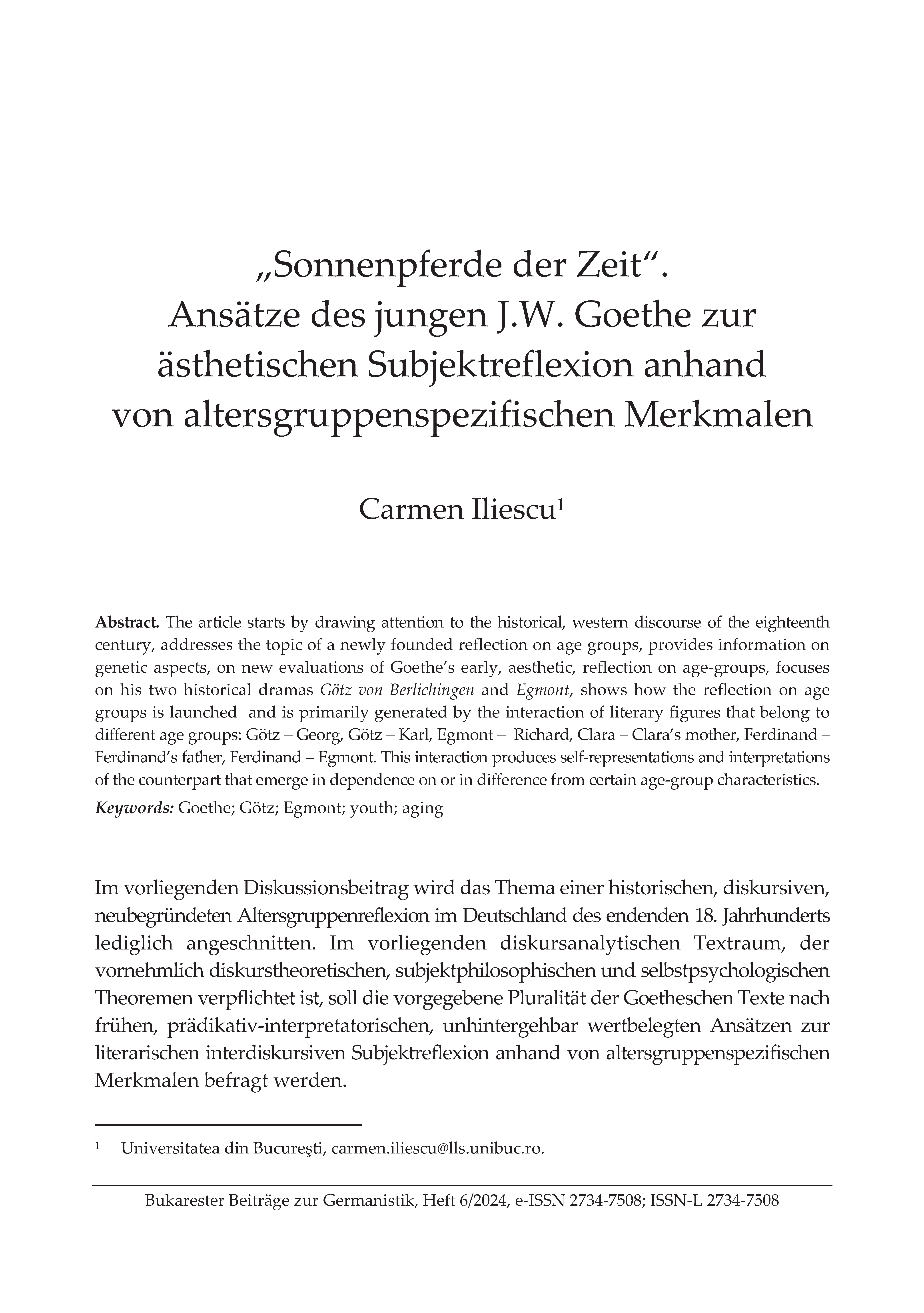„Sonnenpferde der Zeit“. Ansätze des jungen J.W. Goethe zur ästhetischen Subjektreflexion anhand von altersgruppenspezifischen Merkmalen
DOI:
https://doi.org/10.62229/bbzg6-24/6Keywords:
Goethe, Götz, Egmont, youth, agingAbstract
The article starts by drawing attention to the historical, western discourse of the eighteenth century, addresses the topic of a newly founded reflection on age groups, provides information on genetic aspects, on new evaluations of Goethe’s early, aesthetic, reflection on age-groups, focuses on his two historical dramas Götz von Berlichingen and Egmont, shows how the reflection on age groups is launched and is primarily generated by the interaction of literary figures that belong to different age groups: Götz – Georg, Götz – Karl, Egmont – Richard, Clara – Clara’s mother, Ferdinand – Ferdinand’s father, Ferdinand – Egmont. This interaction produces self-representations and interpretations of the counterpart that emerge in dependence on or in difference from certain age-group characteristics.





